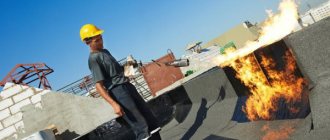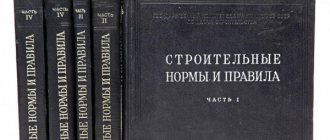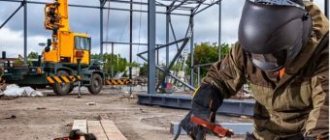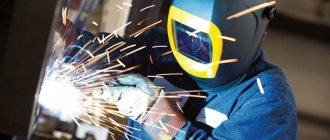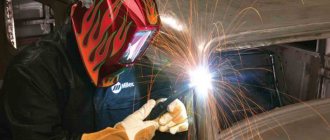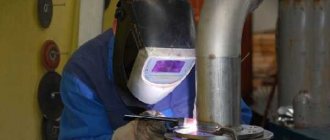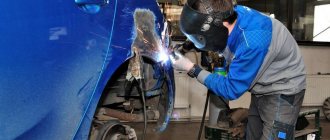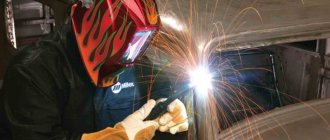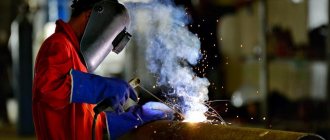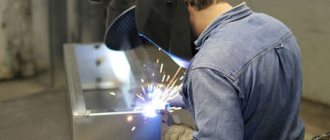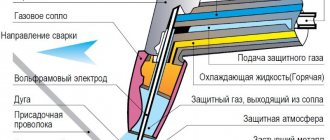Welding work includes a large number of stages. Each of them must be thought through to the smallest detail. It is difficult to keep a large number of parameters and presets in your head, so the technological map was invented. All steps and actions of the specialist are displayed here, which helps to improve the quality of the result. From it, the welder obtains all the necessary information about the requirements for welding work, which allows him to choose the optimal type of consumables and welding equipment. Thanks to this approach, the number of defects in production has significantly decreased and control over the quality of the weld has improved.
What is a welding flow chart
It is worth considering in detail the question of what a welding work flow chart is. In simple words, it is a kind of step-by-step instructions, which describes the entire history of the work. In addition to the welder, the technical map is also used by specialists who control work processes and the quality of structures. The document spells out literally everything: from the type of work to the exact dimensions of the finished structure.
If we exclude all specific terms, then we can determine that the technological map is a collection of technical points that determine the final result. Therefore, the development of this document is an important step on the way to the finished product, since it directly affects its quality. In addition, it allows you to increase the productivity of the welder and use working time more efficiently.
A typical operational flow chart was introduced into the production process in the late 80s of the last century. This was caused by the development of welding technology: new equipment appeared, many metals became available for work, and the process became more complex to perform.
When is it carried out?
Visual measurement control can be carried out at various stages of work. This applies to the inspection of incoming parts for welding. The compliance of the markings with the material itself is checked, as well as the integrity of the metal (no defects during casting and rolling).
At the next stage, the assembly of parts for welding and the correct cleaning of the surface from debris, corrosion and oil are monitored. Attention is paid to the preparation of edges, which must correspond to the thickness of the metal and the welding current, as well as the type of connection.
After completing the welding work, the seams are examined for all types of defects that can be identified visually: cavities, undercuts, lack of penetration, pores, cracks, etc. If the work involves surfacing several layers on a worn-out structure, then the inspection is carried out after each layer is completed. After all work is completed, the product is finally handed over with an inspection report.
The visual measuring method can also be applied to a structure that has already been put into operation if the service life of the welds is coming to an end. If there is any suspicion of deterioration in the quality of connections, in order to avoid breakdowns or injuries, an examination by a controller is ordered.
Data for technical map
The document must contain data on the metals that need to be joined; information on cutting workpieces and cleaning the surface, dimensions of the welded joint. If heating of the metal is required, then there is information about this too. The sequence of formation of welds is also described. Such instructional materials are simply necessary when performing complex work, for example, when welding pipelines.
When different equipment can be used to perform a job, the specific type of welding machines and consumables is indicated. Additionally, information is entered about what parameters need to be set on the welding equipment: current, voltage, polarity. The speed of seam formation and other important data are set. The shape of the weld and the proposed quality control methods are also determined here.
Purpose of weld inspection
Violation of technology, failure to comply with standards when making a seam threatens the failure of steel structures and parts. When manufacturing vessels, containers, and pipelines, the tightness of the seams is important.
When welding, all joints are inspected, the geometry of welded joints, the shape of the seam, and the integrity of the heat-affected zone, where stresses may occur in the metal, are checked with measuring instruments.
VIC also helps to identify internal defects: lack of penetration, discontinuities, possible cavities due to instability of the welding arc. After correcting the identified defects, the VIC is carried out again.
Visual and measurement inspection reports are also drawn up at various stages of operation of metal products and metal structures. The strength of welded joints weakens under the influence of corrosion and the load experienced. Detects fatigue and chemical damage to metal. Visual and measuring checks help to promptly identify and eliminate defects and eliminate factors that reduce the quality of seams.
Careful inspection is necessary when new layers are welded onto old, worn metal. A step-by-step inspection of each layer is carried out, and measurement surveys of the surfacing thickness are carried out. When manufacturing welded parts according to GOST, a certain number of products from each batch are checked. Based on the inspection, a conclusion is issued on the quality of the remaining products.
According to instructions RD 03-606-03, visual and measuring inspections are carried out at all stages of production, from incoming inspection to acceptance of parts.
Welding is often used in construction and mechanical engineering. The slightest deviation from the technology, possible damage to the seams under the influence of weather and industrial factors, threatens financial losses, and possible injury to people.
Peculiarities
At large production associations, engineers are involved in drawing up technological maps. In small enterprises, welders do this work themselves. Regardless of the identity of the compiler, the work begins with a careful analysis of the material that needs to be welded. It is the material that determines the choice of the type of welding equipment, consumables and operating parameters. If the metal was initially analyzed correctly, then there will be no surprises in the work, and the final result will be of high quality.
Each technological map is assigned an original code. It is needed to identify the map among other archival materials. This number is recorded in the technical documentation for the finished structure. The map is signed by the specialist who compiled it.
Who carries out visual control and draws up a report
First, the welder checks his work. The VIC is then carried out by other technical specialists. Drawing up visual inspection reports for welded seams is entrusted to an employee who has the necessary knowledge of visual inspection techniques; measurements are carried out only with verified tools. Often, a magnifying glass or illumination is used for careful control.
The inspector can be a foreman, foreman or an experienced welder. The specialist follows certain control rules:
- prepares the inspection area;
- examines the object of examination;
- records the result in the VIC journal;
- starts measuring the width and height of the seam, the size of the joint, the format of the parts, and other things;
- enters data into regulated documentation.
The controller must have the necessary equipment at his disposal and be provided with a set of tools. Preliminary instruction is provided on the correctness of documentation. Each enterprise develops its own regulations as part of its accounting policies. Visual and instrumental inspection necessarily ends with the activation of the inspection results of welded joints. If violations are detected, further in-depth examinations are carried out using non-destructive testing methods.
The integrity of connections depends not only on the skill of the welder. The quality of the source metal and consumables used for work influences.
Specialists who carry out visual and measurement inspection of joints must understand the intricacies of welding technology and know the basics of metal science.
Example of a welding procedure sheet
Below is a photocopy of the technological map. It can serve as a filling template:
The first column in the document regulates the welding method. It indicates the type of welding selected for a specific type of work: semi-automatic, contact, manual arc welding, etc.; use of a protective environment. After this, the welding code is indicated, in our example - 111.
The most common welding codes and their meanings:
- 141 – welding work is performed using manual argon arc welding with a non-consumable electrode;
- 131 – consumable electrodes and mechanized argon arc welding are used;
- 135 – work is performed in an active gas environment using mechanized welding and consumable electrodes.
After this there is a column informing about the brand of the main material. Here you enter data about the grade of metal that will be processed. As a rule, this data is included in the finished product design. From there you can take them and transfer them to the technological map. Additionally, the group of metals is indicated. The data is shown in the table below:
The column “Name (code) of scientific and technical documentation” indicates a list of regulatory documents that served as the primary source for filling out the technological map. It will not be difficult to enter information into the remaining columns. Their names provide comprehensive information about the nature of the entered data.
Procedure for drawing up the act
The form is developed and approved by the organization carrying out installation using welding. It is allowed to draw up a report of visual inspection of welds by hand; usually a printed form with the company logo and details is filled out. There is no strict procedure for drawing up the act. The on-site inspector most often enters only visual results and measurement data. All other fields must be completed prior to the inspection.
The visual and measurement inspection document is certified by responsible persons who are appointed by order or order of the organization. The document is drawn up in a single copy, each act is assigned an individual number (serial or fractional).
The organization keeps a journal of documentation, in which the act number, date of registration is entered, and the controller puts his signature. The visual and measurement inspection report is stored in compliance with office work standards, in a special folder that is deposited in the archive; the storage period is determined by industry regulations.
Tools used
GOST 23479-79 also indicates the use of specific equipment and tools for qualitative visual research. It is divided into workshop devices that can operate at temperatures from +5 to +20, and field devices that operate from -55 to +55 degrees. These tools include:
- measuring magnifiers;
- welding templates for checking weld geometry parameters;
- squares for checking 90 degrees;
- bore gauges;
- protractors with vernier;
- probes for monitoring gap maintenance;
- micrometers;
- thickness gauges for determining pipeline walls;
- calibers;
- calipers;
- rulers and tape measures.
Good lighting is necessary for proper inspection and control, so the inspector should always have a flashlight and additional lighting equipment. In some cases, microscopes and borescopes are used. This allows you to more accurately determine the nature of the defect and its severity. If the product is located at a high altitude, and it is not possible to deliver a specialist there, then binoculars of various powers are used.
It happens that the need for visual inspection arises on structures where it is impossible to deliver an inspector and with which there is no direct visual contact. This can be underground in specialized tunnels, or in an environment with high temperatures and dangerous background radiation. Then, to search and analyze defects, remote platforms with video surveillance and television installations are used, through which the inspector can monitor the area being inspected. In addition to robotic systems, lighting equipment is installed. But these automated means are used extremely rarely with the visual method of monitoring welded joints.
